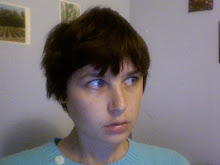For a brief period in the nineteenth century female walking was a serious sport and a serious business. Large crowds turned out to watch, and successful women earned a great deal of money. Even so, it was an activity that had something sleazy and daring about it: pedestriennes weren't much better than actresses. It was only a passing fad, however. It was superseded in due course by the more exciting, and even more daring, sport of female bicycle riding, and some of the successful female walkers made an easy transition from two feet to two wheels. (76)Now, the pedestriennes' undertakings were decidedly not your typical walk in the park. Nicholson describes at length the exploits of professional walkers, both male and female. The most famous, perhaps, is Captain Richard Barclay, a Scot, who set out to walk 1000 miles in 1000 consecutive hours--and did so in 1859, on a set course of a single mile in Newmarket, Suffolk. Several women in the States followed suit twenty years later, and took to walking record-setting numbers of quarter-miles in quarter-hours. Exilda La Chapelle (which, for the record, is a wonderful name) walked 3000 quarter-miles in 3000 consecutive quarter-hours. Not only is that a lot of walking, it's a lot of walking without sleeping. Pretty hardcore. For more hardcore walking women, this is a very nice timeline:
http://www.runtheplanet.com/
And for a more detailed social and political history of pedestriennes, read this 1999 paper by Dahn Shaulis (who also happens to be quite an excellent poet):
http://planetultramarathon.wordpress.com/2007/08/19/
As enjoyable as Nicholson's writing is, The Lost Art of Walking's primary concern is just that: the art of walking. Although he's a treasure trove of historical curiosity (the works of sculptor Richard Long, a conference of psychogeographers in Manhattan, the story Werner Herzog's midwinter walk from Munich to Paris in order to visit actress Lotte Eisner whom he had heard was on her deathbed), Nicholson is not too interested in examining the politics and ideology of walking. Shaulis' article does a much more thorough job of that.
I suppose walking will always be a more political act for women than for men. There are added risks involved, and added stigma to overcome. You have no idea how many people say to me, with great shock, "You're walking alone?" Not just when I'm out overnight, either: even on dayhikes, people are surprised to see a woman alone in the woods. I wonder why people don't react with the same sort of surprise and anxiety when I walk alone in, say, Burlington. Would they worry if I were walking alone on the streets of Manhattan?
There's a good memoir, In Beauty May She Walk by Leslie Mass, about what it means to be a woman alone on the Appalachian Trail. It gets a bit "inspirational" at times, a bit Oprah for my taste, but posesses a good deal of wisdom nonetheless. Let it be known that I haven't cracked the cover of a single Camino memoir yet, and don't plan to until I finish (I do welcome recommendations!). I had hardly read a word of backpacking literature when I set out on the Long Trail last summer, but when I got back, I was desperate for books to read, for words that would help me make sense of my experience. Experience first, theory later.

My take on why people ask women if "their walking alone" is an accumulation of instincual fears and lack of extended experience on trails. Granted...If there are mountain lions at every corner..I can see the concern..but in most trails that is not an issue. If one has this notion that its unsafe for women to be out walking/hiking alone its because of our society also. When a man is asked if he is out hiking alone its looked at as more a "wow..your out doing this alone"...but in mainstream america when a female is asked the same question its more..why are you alone??? Its dangerous out there...". Kinda silly since a bear can chew a male as easily as a female..lol. The fact of the matter is (ok...not a proven fact by me but you get the hint) that anything bad happening to a female is extremely hightened once she walks out of the woods and into society. Although Im not saying to live in fantasy land here...violent crime can happen anywhere...the chances of it happening in a city are so high compared to the wilderness. I believe males and females alike take to the woods for the feeling of being safe (after getting accustomed to the forest first). Kate, I find that your last sentence makes much sense in many aspects. In this instance - the EXPERIENCE would be having spent multiple nights in the woods and the THEORY would be the thought of it being dangerous for a female to be out in the woods alone. I believe that once one experiences the forest for multiple nights the theory part of that is errelivant.
ReplyDeleteI shall take a look at "The Lost Art of Walking". Sounds like great reading.